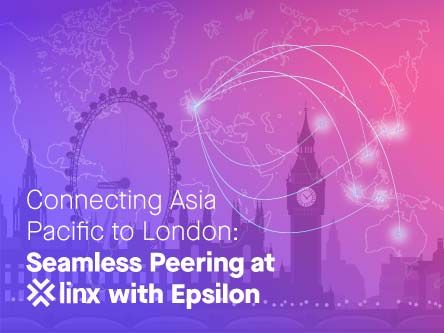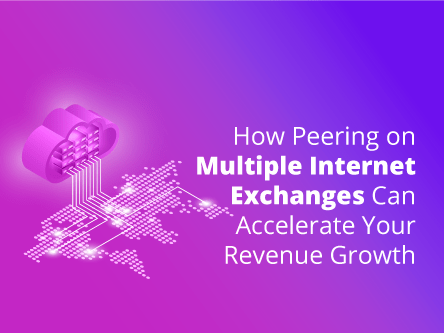In today’s era of rapid digital innovation, businesses can least afford subpar connectivity. Consider a global organisation with remote locations across different time zones. What happens when internet access varies for employees who need to collaborate? How can a business thrive with internet access barriers impeding the performance of crucial applications?
Contrary to popular belief, the internet isn’t a single universal network but a collection of numerous small, medium, and large networks working together. These networks need interconnection mechanisms to transfer data from one end user to another, either directly between two networks or indirectly through one or more networks.
Networks can exchange data via remote peering, IP transit, or direct internet access (DIA). What are their differences, and which is ideal for your business?
Remote Peering
Peering involves the direct exchange of internet traffic between networks at an Internet Exchange Point (IXP), reducing reliance on third-party transit providers and enhancing performance through efficient data exchange with fewer hops in between.
Remote peering allows enterprises to enjoy these benefits without a physical presence at an IXP, saving on hardware installation, colocation, utility fees, and ongoing maintenance. It enables businesses to connect to multiple IXPs remotely and on-demand, supporting scalability and expansion into new markets. Remote peering also improves user experience by reducing network latency with fewer hops between service providers.
Ultimately, remote peering simplifies network management. Instead of building your own infrastructure, a managed service provider can handle all aspects of peering requirements, including connecting to IXPs, managing memberships, providing technical support, handling legal matters, and processing billing.
IP Transit
Large international IP networks, present in key locations worldwide, often connect seamlessly through peering, which involves the exchange of IP packets, because such exchange is mutually beneficial to them. Smaller networks pay a settlement charge known as IP transit for exchange of IP packets with larger networks because in such exchanges value delivery is skewed in their favour.
If a provider doesn’t peer directly with a destination network, it must pass the IP traffic through larger networks, increasing latency and reducing throughput. This can be mitigated by acquiring IP transit from an ISP with a robust peering network.
IP transit is a paid service connecting one network to another on the internet, enabling network operators, ISPs, and businesses to maintain uninterrupted connections to the global internet infrastructure. It is especially beneficial for businesses with equipment in data centres, offering excellent internet access and connectivity to the global internet. A wholesale service, IP transit is available primarily to autonomous system (AS) number owners that are running border gateway protocol (BGP).
IP transit is cost-efficient, as you only pay for the bandwidth you need, and it provides improved reliability and performance due to a robust network infrastructure. Additionally, it reduces complexity by offering a consolidated experience, minimising the need to deal with multiple vendors.
An ideal IP transit provider with a robust, global network can provide the reach and bandwidth your business requires. Providers that offer wider peering agreements can ensure direct routes and enhanced performance. IP transit services that come with strong SLAs typically guarantee higher uptime, bandwidth, and more responsiveness.
Direct Internet Access
DIA provides dedicated bandwidth with consistent speeds tailored to a specific location or business, ensuring 24/7 reliable access to mission-critical applications and infrastructure.
With an exclusive, direct link between your organisation’s network and the internet, you gain guaranteed bandwidth and scalability based on your business needs. Each business has its own dedicated port, enabling faster speeds and better control, resulting in low latency for seamless real-time applications like gaming or streaming.
Unlike shared internet access, which offers inconsistent bandwidth and lacks service-level agreements (SLAs), DIA guarantees symmetrical upload and download speeds for efficient data exchange. It allows businesses to manage devices, implement security controls, and decide how to use their bandwidth flexibly. DIA is known as a “prioritise and protect” option because it provides enhanced security through a dedicated network for exclusive traffic and is customisable to meet specific capacity needs.
Which One Works Best for You?
Choosing the right internet access for your organisation depends on your requirements for speed, scalability, security, and cost control. Consider the following questions first:
- What are the main use cases of internet access for your organisation?
- Is high latency and downtime a major concern?
- Does your organisation frequently connect to the cloud?
- What are the key priorities for your organisation?
- Would a combination of access types benefit your organisation?
The choice depends on your unique business needs. Remote peering is cost-effective, reducing data transit distances, minimising congestion, and enhancing performance. DIA offers dedicated bandwidth, consistent performance, and control, ideal for organisations without autonomous systems (AS) and border gateway protocol (BGP) capabilities. For those with AS and BGP, IP transit is often preferred. Combining these options can also be beneficial.
When selecting a provider, choose one with a proven track record and a vast network of partners. Epsilon’s Remote Peering service, supported by over 20 IX partners in more than 150 locations worldwide, offers a comprehensive solution to access thousands of target peers globally to enhance content and application delivery across your network.
Our IP Transit helps ISPs, carriers, and enterprises seamlessly expand their digital ecosystems and physical networks with reliable, high-performance internet access. Meanwhile, our global Dedicated Internet Access ensures symmetrical bandwidth and constant availability, providing consistent connectivity to your applications, servers, and infrastructure.
With over 600 cloud, IX, and SaaS tech partners across the United States, Europe, Asia, and the Middle East, Epsilon is ready to power your business to greater heights – whether through Remote Peering, IP Transit, or DIA.







